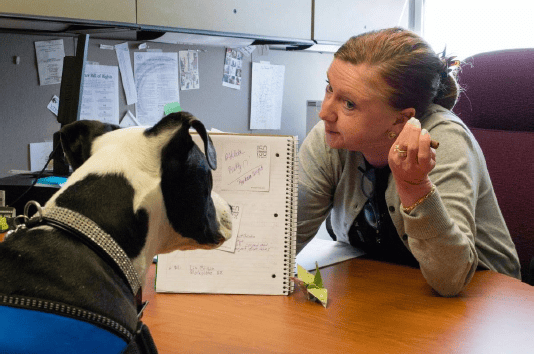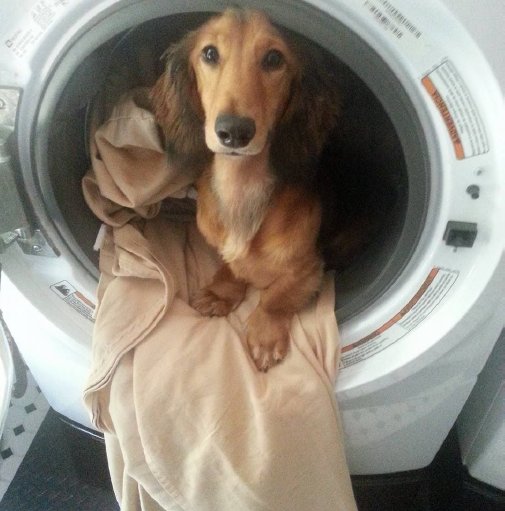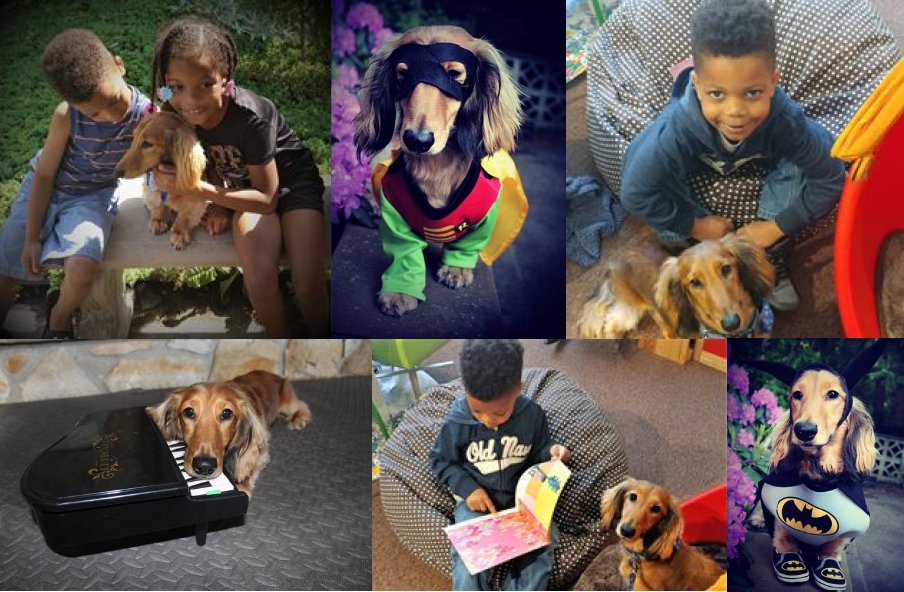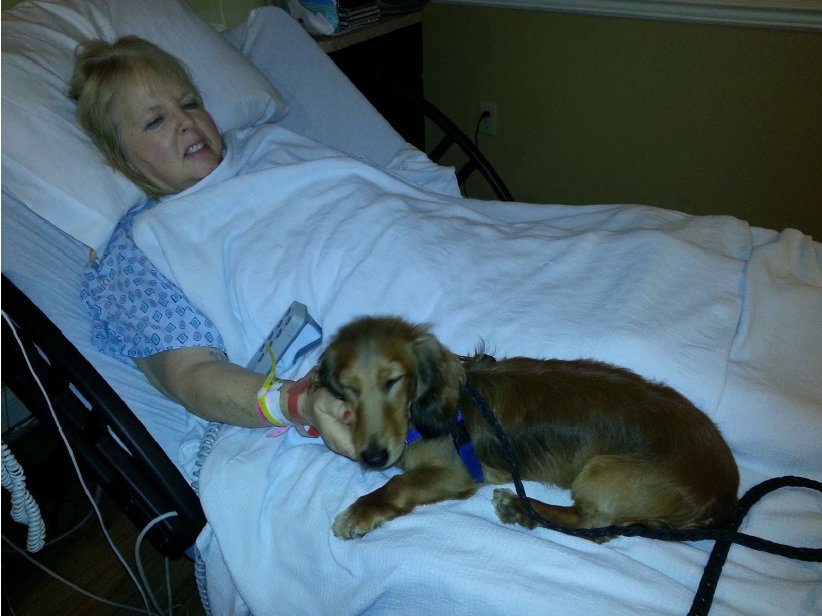If you are a dog parent, you know firsthand the benefits that our furry friends can have–they welcome us when we come home, they snuggle with us on the sofa, they guard us from the mailman, and they always bring a smile to our faces. There is countless anecdotal and research-based evidence of the enormous positive power that dogs can have.
But dogs can also have JOBS! In addition to being police K9s, military dogs, and seeing-eye dogs, our four-legged buds can provide therapeutic interactions. Dogs are assisting in healing after an illness, providing reassurance to an older adult with dementia, and providing security to a returning soldier with PTSD–just to name a few benefits! We can repay them by spending time with them and keeping them healthy by getting cbd for dogs.
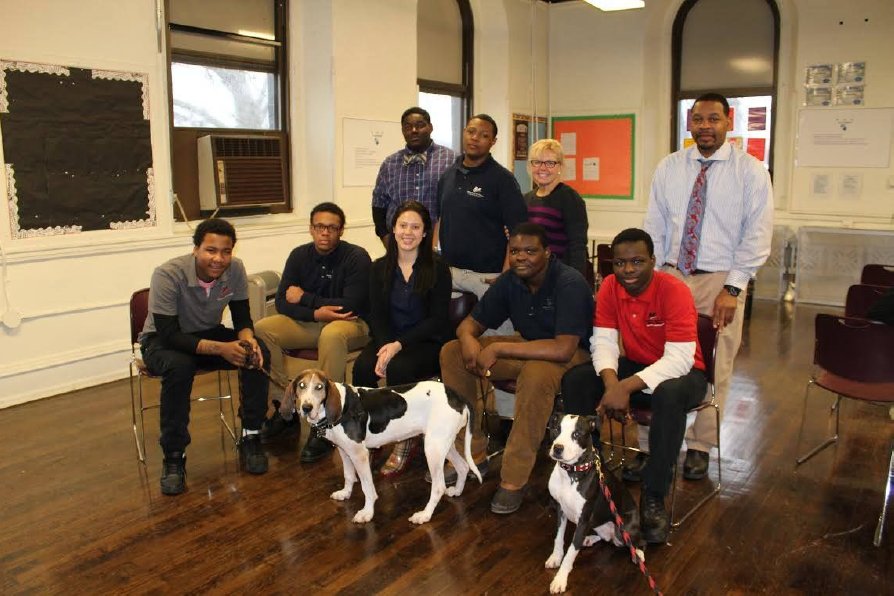
There are two main types of pet therapy, Animal Assisted Activity (AAA) and Animal Assisted Therapy (AAT). AAA is defined as opportunities for motivational, educational and/or recreational benefits in enhancing quality of life. AAT is defined as goal-directed intervention, delivered by an appropriately credentialed health or human service professional in which an animal is incorporated as an integral part of the clinical healthcare treatment process. Published studies repeatedly highlight the benefits of pet therapy: lower blood pressure, improved cardiovascular health, release of calming endorphins (oxytocin), relaxation, lower anxiety levels, higher spirits, and lower depression.
Several studies have shown that therapy dogs help to reduce pain levels and anxiety in pediatric populations. Therapy dogs have also been found to increase patient’s emotional health and their quality of life, despite the continued decline in their health. For example, a 2005 study of heart failure patients showed that exposure to therapy dogs decreased the patient’s self-reported anxiety levels, decreased their stress hormone (epinephrine) levels, decreased their PCWP, decreased systolic pulmonary artery pressure, as well as decreased heart rates versus the volunteer-only and the control groups.
Another study using therapy dog intervention in patients with dementia showed a significant drop in agitated behaviors from the beginning of the therapy to its conclusion. It also showed a significant increase in the social interaction of the patients after the study ended. A study looking at children with autism and the effects of therapy dogs on their social interactions showed significant improvement in the emotional connection of the child and the dog as well as the child and the family members. Pet therapy visits significantly reduced loneliness of elderly patients in long-term care facilities, as shown in other studies.

Alicia Harantschuk, president of Comfort Caring Canines Therapy Dogs, Inc., does not need to read the studies about pet therapy benefits to know how much a dog can change and better someone’s life. She knows firsthand–because she and her furry friends practice pet therapy daily.
Alicia reflects: During the last seven years, I have either been researching or actively involved with pet therapy. I have taken part in over 400 pet visits with children, adults, and seniors with varying medical or emotional issues. During my involvement, I have seen breed diversity, program acceptance and the understanding pet therapy benefits evolve. At one time, it was a common perception that only Labradors and Golden Retrievers were suitable therapy dogs. Today we evaluate the individual not the breed. Now dogs of all breeds, shapes and sizes are showing the benefits a loving touch and a playful exchange can have.
Therapy dogs are widely used in pediatric settings including schools, hospitals, dentist offices, reading programs, and rehabilitation settings. For seniors, it is commonplace for therapy dogs to be regulars at nursing homes and assisted living facilities. Hospice patients also benefit from time spent with a therapy dog enjoying the soft, soothing touch of their fur. Rehabilitation centers find therapy dogs can be effective patient motivators. The list goes on and on and you and your dog can learn more at Dog Training Stuart.
***
If you are interested in learning more about the everyday impact therapy dogs make or you want to connect with other dog lovers, you can explore a dedicated dog blog. A dog blog will often feature inspiring stories, training tips, and advice from the experienced owners to the people just starting out. This can be an amazing way to add some personal and practical perspectives to the whole science behind pet therapy.
***
The science shows us that good things are happening within our bodies that aid in physical healing and boost emotional well-being as a result of a AAA or AAT interactions. To ensure a successful visit, handler and canine should be well-trained and certified and there should be ongoing communication between the facility and the handler. Being prepared and informed is the first step in keeping interactions safe and successful. Interactions should only happen if the dog is healthy, well trained, in the right state of mind, and if the individual is receptive (never assume someone wants a visit). If your dog is afraid of thunderstorms, don’t attempt visits in the middle of one thinking they will just work through it!
Alicia states, I have three therapy dogs who are actively making visits. Mae Belle is a 7-year-old rescued Treeing Walker Coonhound. Her physical scars show her beginnings were painful. Obedience did not come easy to Mae Belle. Getting her to understand the “sit” command took nearly two weeks. It turned out to be a lesson in patience for me. She caught on and now Mae Belle is a regular on the visiting circuit, enjoying “sofa time” with a variety of patients.
Vegas is our showgirl, a 5-year-old is a rescued Pitbull Mix who loves people more than anything! She has learned more than 70 tricks and entertains everyone she meets. After receiving an “official” badge, she has been known to call meetings with management to discuss pet therapy programs.
Finally, there is Dillon, a 2-year-old Mini Dachshund, who is 50% refined gentlemen and 50% clown. While on the job he is focused and obedient, but at home he can be found hiding in the washing machine, trying to eat any unsecured paper product, and trying to get on top of any high surface, even if it means moving a chair to make it happen.
My dogs have shown me positivity can come from any situation, even my father’s passing, which was the catalyst to finding my life’s passion in pet therapy. My world has been forever changed, enriched, and meaningful because of my efforts and commitment to pet therapy.
Alicia’s Stories from the field:
One day, I received a request to help a child who was afraid of dogs after being attacked. We started slowly with the young boy walking by the dog as he entered and exited the building. Once there was a trust between the boy and the dog, I broke out my secret weapon, a piano-playing Dachshund, Dillon. It was the first time I saw the little boy smile, and in that moment I was reminded again of the importance of the work we do with our dogs and the benefits it can bring to others.
Today, the little boy is getting comfortable dressing Dillon in superhero costumes, reading him a story, assisting with training exercises, and learning about canine care. We still have work to do, but the coordination and dedication of therapist, parents and volunteer are making it a success.
A Friend Until the End:
According to Pawster.com, end of life situations are sad and stressful for everyone. Families still want to make every effort to find comfort for their loved one. Refusing basic hygiene, socialization, and food in the nursing home setting, this patient’s family sought creative approaches to get their loved one smiling. We immediately knew Vegas, our most charismatic dog, was perfect for this mission. Even though Vegas knows over 70 tricks, she didn’t need to use one to get a smile from this woman’s face. Vegas and this woman transcended boundaries and immediately connected. Vegas even seemed to understand the Ukrainian language the woman was speaking! Vegas read this woman, and knew just how to bring joy.
One day, this ferociously-friendly pup took on an uncharacteristically more demure attitude with her older friend. It was a behavior we had never seen from Vegas before. No longer was there a desire to be touched or close, she only shifted between pressing her nose to the side of the patient’s bed and sitting next to the patient’s son. Within the hour, the patient passed away, and Vegas never approached her again. Instead, Vegas comforted every person in the room. I am convinced she knew what was happening. Vegas loves people more than anything, and that day she shared a love like no other.
A Ruff Road to Recovery:
A fractured arm, leg, and pelvis, infection, and depression left this patient bedridden. It was the love of a pitbull that would jumpstart her recovery! With the encouragement of several warm and wet faces of love, this patient was able to continue her recovery, practicing physical therapy on a rowing machine, and ultimately healing. She was motivated throughout by her friends and it was reported that she experienced less pain during rehabilitation sessions when the dogs were there to “help” her.
The Authors:
Alicia Harantshuk has four certified therapy dogs who have collectively completed more than 400 visits. She is the current President for Comfort Caring Canines Therapy Dogs, Inc. and a member of their evaluation team responsible for certifying prospective teams. In addition, Alicia took over the therapy dog and Canine Good Citizen training program for Philly Unleashed. She has been a guest speaker at a number of schools and has been acknowledged for her efforts in local papers and television. Alicia is always willing to step up and help individuals and other organizations get involved believing “doing good in the world is not a competition or an individual sport”.
Providenza Loera Rocco is an Assistant Professor of Bioethics in the Center for Bioethics, Urban Health, and Policy, at the Lewis Katz School of Medicine at Temple University where she also serves as the Assistant Director of the MA Urban Bioethics Program. She specializes in urban bioethics and legal and ethical issues in end-of-life care. Enza earned her master’s in Social Work and her master’s in Bioethics from the University of Pennsylvania, and she earned her law degree from Temple University Beasley School of Law. Enza also teaches at Simmons School of Social Work where she teaches courses in social policy, and at Drexel University where she teaches courses in bioethics. Additionally, she serves on the Hospice and Palliative Nurses Foundation Board of Directors.
Breigh Godleski is a second year student in the Physician Assistant Program at Temple University.
Currently Breigh is completing her clinical rotations, starting with Pediatrics. Breigh believes in addressing healing from every aspect, so she has a huge interest in therapy animals – so much so that she is doing her capstone project on them!
EDITOR’S NOTE: The opinions expressed here by Impakter.com columnists are their own, not those of Impakter.com.




